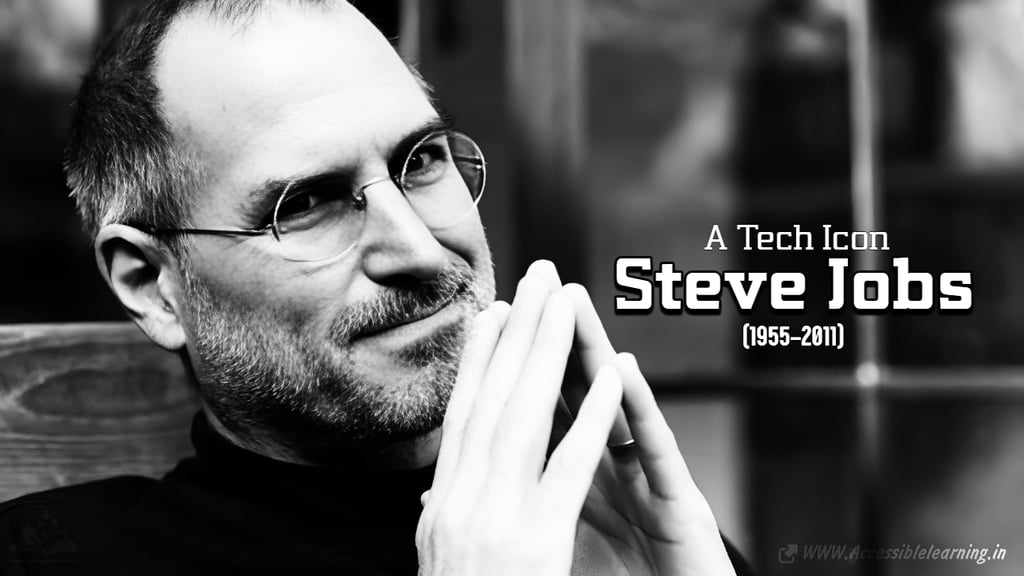
Steve Jobs’ Journey: From a Garage Startup to a Global Empire
Discover the incredible journey of Steve Jobs, the visionary who transformed technology, design, and multiple industries. Explore his early life, Apple’s rise, his leadership style, and his enduring impact on the world.
ENTREPRENEUR/BUSINESSMANEDUCATION/KNOWLEDGECOMPANY/INDUSTRYBIOGRAPHYAI/FUTURE
Kim Shin
2/13/20255 min read


Few names in the tech industry evoke as much admiration and intrigue as Steve Jobs. A brilliant visionary, innovator, and entrepreneur, Jobs revolutionized multiple industries, from personal computing and smartphones to digital animation and music. His journey, marked by highs and lows, shaped the way the world interacts with technology today. This article delves deep into his life, achievements, struggles, and lasting impact on the world.
Early Life and Education
Steve Paul Jobs was born on February 24, 1955, in San Francisco, California. He was adopted by Paul and Clara Jobs, a working-class couple who nurtured his early interest in electronics. Raised in Silicon Valley, he was exposed to the burgeoning tech scene, developing an early fascination with computing.
Jobs attended Homestead High School, where he met Steve Wozniak, the future co-founder of Apple. He briefly enrolled at Reed College but dropped out after six months, opting for an unconventional path of self-exploration. His interest in spirituality and simplicity led him to travel to India in 1974, seeking enlightenment—a journey that deeply influenced his design philosophy.
The Birth of Apple
In 1976, Jobs, along with Steve Wozniak and Ronald Wayne, co-founded Apple Computer, Inc. from his parents' garage. Their first product, the Apple I, was a modest success, but the Apple II (1977) became one of the first commercially successful personal computers, setting Apple on a trajectory of growth.
Jobs' obsession with design, usability, and innovation led to the creation of the Macintosh in 1984, the first personal computer with a graphical user interface (GUI). Though revolutionary, it failed to dominate the market. Internal conflicts at Apple led to Jobs' ousting in 1985, a moment that, while devastating, ultimately paved the way for his greatest successes.
NeXT, Pixar, and the Road Back to Apple
After leaving Apple, Jobs founded NeXT Inc., aiming to develop high-end computers for business and education. Though commercially unsuccessful, NeXT’s technology was ahead of its time, later playing a key role in the development of macOS.
In 1986, Jobs acquired The Graphics Group (later renamed Pixar) from Lucasfilm. Under his leadership, Pixar transformed into a powerhouse in computer animation, producing Toy Story (1995), the first fully computer-animated feature film. Pixar’s success culminated in its acquisition by Disney in 2006, making Jobs a billionaire and Disney’s largest individual shareholder.
The Second Coming: Jobs Returns to Apple
Apple, struggling in the mid-1990s, acquired NeXT in 1997, bringing Jobs back as CEO. His return marked a dramatic turnaround:
iMac (1998): A bold, colorful design that revitalized Apple's image.
iPod (2001): Revolutionized the music industry by making digital music mainstream.
iTunes Store (2003): Changed how people purchased and consumed music.
iPhone (2007): Transformed mobile technology, introducing the era of smartphones.
App Store (2008): Opened the floodgates for mobile applications, changing software distribution.
iPad (2010): Created a new category of consumer devices.
Jobs’ ability to anticipate and shape consumer desires, along with his perfectionism, made Apple the world’s most valuable company.
Leadership and Philosophy
Jobs was known for his intensity, passion, and perfectionism. He demanded excellence from his teams, often pushing them beyond their limits. His design philosophy emphasized simplicity, elegance, and seamless user experience—influenced by his study of calligraphy, Zen Buddhism, and industrial design.
Famous for his charismatic keynote presentations, Jobs had a knack for storytelling that made Apple launches cultural events. His "Reality Distortion Field"—his ability to convince others to believe in seemingly impossible ideas—was both admired and criticized.
Jobs believed in end-to-end control over hardware and software, ensuring a seamless user experience. Unlike his competitors, he insisted on keeping Apple's ecosystem closed, a decision that contributed to the company's uniqueness and loyal customer base.


Personal Life and Legacy
Jobs married Laurene Powell Jobs in 1991, and they had three children. He also had a daughter, Lisa Brennan-Jobs, from an earlier relationship, whom he initially denied but later embraced.
His battle with pancreatic neuroendocrine cancer began in 2003. Despite treatments, he resigned as Apple’s CEO in August 2011, passing away on October 5, 2011.
The Enduring Impact of Steve Jobs
He redefined multiple industries, from computing and smartphones to music and animation.
His design-driven approach continues to inspire product development across sectors.
His legacy at Apple endures, with the company maintaining its ethos of innovation and premium design.
His biography, speeches, and leadership style remain a guiding force for entrepreneurs worldwide.
His contributions to animation through Pixar reshaped the film industry, setting new standards for digital storytelling.
He played a crucial role in shaping the modern mobile app economy, which continues to thrive globally.
Jobs' vision for AI and voice-controlled assistants, as evidenced by Siri, laid the groundwork for future advancements in artificial intelligence.
FAQ's
Who was Steve Jobs?
Steve Jobs was an American entrepreneur, inventor, and co-founder of Apple Inc. He played a key role in revolutionizing personal computing, smartphones, music, and animation through products like the Macintosh, iPhone, iPod, and iPad.
What companies did Steve Jobs found or lead?
Steve Jobs co-founded Apple Inc. in 1976, founded NeXT Inc. in 1985 after leaving Apple, and acquired Pixar Animation Studios in 1986, which later became a part of Disney. He returned to Apple in 1997 and led the company to unprecedented success.
What were Steve Jobs' most significant innovations?
Macintosh (1984)—The first personal computer with a graphical user interface.
iPod (2001)—Revolutionized the music industry.
iTunes Store (2003)—Changed how people purchased and consumed music.
iPhone (2007)—Transformed the smartphone industry.
App Store (2008)—Opened new opportunities for developers and businesses.
iPad (2010)—Popularized tablet computing.
Why was Steve Jobs fired from Apple in 1985?
Jobs was ousted from Apple due to internal conflicts with the board and CEO John Sculley. His intense leadership style clashed with executives, leading to his departure. However, he later returned in 1997 and led Apple to its greatest successes.
What was Steve Jobs' leadership style?
Jobs was known for his demanding, perfectionist, and visionary leadership. He had a keen eye for design and user experience, emphasizing simplicity, innovation, and excellence. His "Reality Distortion Field" inspired employees to achieve the seemingly impossible.
What was Steve Jobs' role in Pixar?
Jobs bought Pixar from Lucasfilm in 1986, transforming it into a leading animation studio. Under his leadership, Pixar produced Toy Story (1995), the first fully computer-animated movie, and later became a part of Disney.
How did Steve Jobs die?
Steve Jobs was diagnosed with pancreatic neuroendocrine cancer in 2003. Despite treatments, he resigned as Apple’s CEO in August 2011 and passed away on October 5, 2011, at the age of 56.
What books or movies are based on Steve Jobs' life?
"Steve Jobs" (2011)—A biography by Walter Isaacson.
"Steve Jobs" (2015)—A movie starring Michael Fassbender.
"Jobs" (2013)—A biopic starring Ashton Kutcher.
"The Pixar Story" (2007)—A documentary about Pixar’s rise.
What were Steve Jobs' last words?
Jobs’ last words were reportedly, "Oh wow. Oh wow. Oh wow," as recounted by his sister Mona Simpson. His exact meaning remains unknown, but it has sparked interpretations about his final moments.


Steve Jobs was more than just a CEO—he was a cultural icon who transformed technology into an extension of human creativity. His life story is a testament to passion, resilience, and the power of thinking differently. Today, the world continues to feel the ripples of his genius, proving that innovation, when combined with vision and determination, can change the world.
Subscribe to our newsletter
All © Copyright reserved by Accessible-Learning
| Terms & Conditions
Knowledge is power. Learn with Us. 📚


